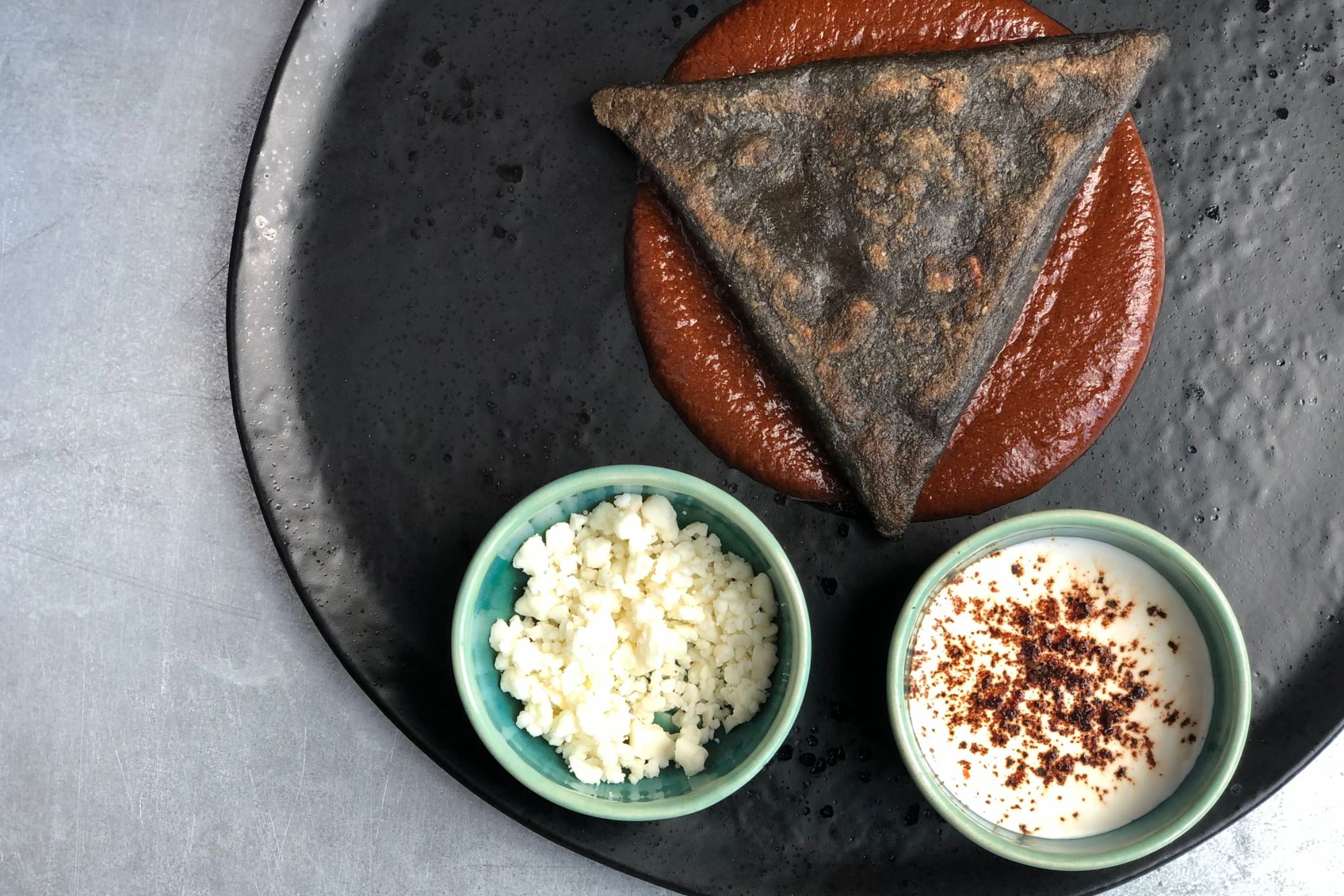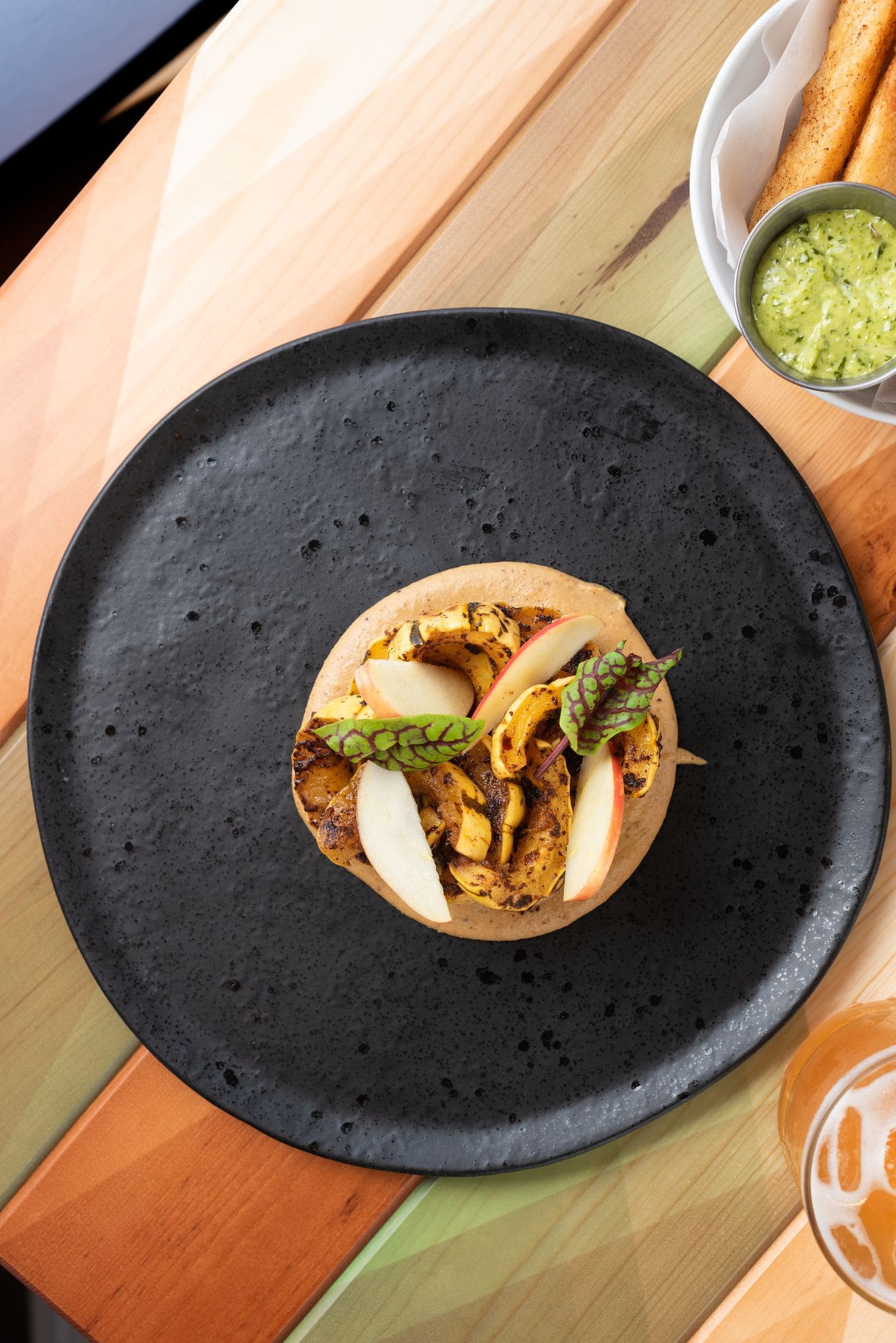2020 has been a hell of a year for the hospitality industry. It’s been devastating to watch restaurants close one after the other. We’ve seen institutions shutter, both across the Twin Cities (Bellecour, Bachelor Farmer, Chino Latino) and across the country (New York City’s 21 Club, Chicago’s Blackbird, Napa’s Restaurant at Meadowood). In short: It’s been a sad, sad time.
But there was one closure that hit me particularly hard: Northeast Minneapolis’s Popol Vuh. When I first heard that the celebrated modern Mexican eatery would not reopen, I (like most Twin Cities foodies) was sad. The more I sat with the news, I realized I was just plain mad. It was July 20, and we Minnesotans were feeling cautiously optimistic while trying to embrace our new COVID lifestyles. But even the summer sun couldn’t save us from the cold hard truth of the collapsing of an entire industry.
Sure, my anger was likely the cumulative build of seeing dozens of Twin Cities restaurants shutter over several months, and it just exploded that day, like the emotional outbursts so many of us have experienced during this pandemic. But mostly, I was mad that one of my favorite restaurants across the entire globe was never going to reopen. I was angry about all the future fine-dining experiences at Popol Vuh that I, and others, would never experience. I was upset about all the people I wanted to take there who would never set foot inside the warm, familial-feeling space.
Beyond Minneapolis gourmets being robbed of yet another acclaimed eatery, I was mad for restaurateur Jami Olson. Although our paths didn’t cross there, we hail from the same small northern Minnesota town. After making a name for herself with stints at popular Twin Cities spots like Lyn 65, she’d taken a huge leap of faith and struck out on her own (alongside talented chef Jose Alarcon) with the debut of dual concepts Centro and Popol Vuh in the summer of 2018. The latter was quickly recognized for its culinary excellence with accolades like a 2019 James Beard nod. I suppose I saw parallels between her journey and my own, from growing up in a rural farm town to building something we’re proud of, and in turn I was pissed on her behalf at all that being ripped away from her.
So what was it like losing Popol Vuh? “It took months to pull the trigger,” Olson tells me. ”I was very careful to make sure I wasn’t making an unnecessary knee-jerk reaction in response to panic felt from the pandemic. While we were shut down, I would sit in the empty Popol Vuh space after a Centro takeout service and try to reimagine the space. There were so many unknowns, and we had no idea how long it would be before we could open the doors to Popol Vuh again. I was hopeful, but as weeks turned into months, my heart and my gut told me it was time to move on. We needed life in that space again.”
For Olson, this idea of life hits particularly close to home. Within months of opening Centro and Popol Vuh back in 2018, she lost her dad, her brother and her grandfather — loved ones who would never see her dreams come to life. The first time I dined at Popol Vuh, she showed me the special touches in the space, things that might go unnoticed but that contributed to the cozy, convivial ambiance. There were pieces saved from her grandfather’s farm, lovingly preserved and thoughtfully placed. But the one keepsake that stuck with me was a money tree from her brother’s home that quietly took up residence in a corner of the dining room.
Today, that tree sits in the neighboring Centro space. “It’s not only a symbol of the success of the restaurants, but it’s also a reminder of the challenges I faced when opening Centro,” notes Olson. “It makes me sad that my dad, my brother and my grandpa never were able to see the restaurants come to life, but it’s also a reassurance that I can do hard things, that we all can do hard things — even get through a pandemic. These are the things in life that make us stronger.”
When it was announced that a Mexican cafe/bakery/market concept called Vivir (Spanish for “to live”) would fill the Popol Vuh space, I was immediately opposed to it. I admit this was totally childish. But as anyone who has experienced loss can likely understand, I wondered how this imposter could possibly replace what was such a meaningful restaurant and an instant institution in our community and in our hearts.
So it was with great skepticism that I tried takeout when Vivir officially opened in late November. As I drove over to my old stomping grounds in Northeast, I anticipated what a disappointment soggy takeout eaten at home would be compared to the mouthwatering, heartwarming meals I’d experienced in the Popol Vuh dining room. But as I rounded the corner on Quincy Street, I saw the space aglow just like it’d been the first time I dined there, as snowflakes fell gently outside and I sipped on a lovely Spanish red. Maybe it’ll be alright, I thought to myself.
But it was more than just alright. It was hands-down the best takeout I’ve eaten during the coronavirus outbreak (or ever, really). In the empanadas, torta, pozole and baked goods, I could taste little homages to my beloved Popol Vuh. It was a reminder that, even in a year when everything has changed, some things still remain.
And we Popol Vuh devotees can expect even more of those little homages. “Once Vivir is dine-in again and we have our beautiful patio built this spring, don’t be surprised if you see some Popol Vuh classics return, even if only briefly, for our dinner service,” says Olson, who admits to missing Alarcon’s famed grilled whole fish the most. As for her Vivir favorites? “I’m obsessed with the cemita sandwich right now, though the rest of the staff would say the breakfast tacos — those are unbelievable too,” she gushes. “I’m also excited to see what Jose will do when we are able to expand our dinner service menu items.”
“I compare opening restaurants to having children: Once you forget the pain of the birth, you decide to have your second and your third,” Olson continues. “We owe so much to Popol Vuh. It was a restaurant that gave us so much pride and really put us on the map, not just locally but nationally. Popol Vuh earned us a reputation beyond what we expected, and for that, we are so grateful. It was a restaurant built with passion, and that’s part of what made the experience so special. We still have that same passion and the same dedicated group. It’s exciting to see what we can do with a new concept.”
And at the same time that she mourned the loss of one of her first born, Olson welcomed into the world her youngest. “Honestly, Vivir was a breath of fresh air,” she concludes. ”It was nice to have a distraction from the doom and gloom of what was happening in our industry and in the world. It gave us something to look forward to. I wholeheartedly believe we have earned the trust of the community and that Vivir will flourish in the Northeast neighborhood. I hope that in a few years people will look back and think of it as a bright spot of 2020, because we all know there haven’t been many of those.”
That’s why, for me, Vivir is the ultimate restaurant pivot of 2020. Not because of some brilliant rebranding or some perfectly timed marketing plan. But because it proves that out of the ashes of something beautiful and beloved can rise something that, though different, is equally beautiful and beloved. Because it illustrates that out of loss can come hope. And because it shows that, during this time when our entire lives have seemingly been put on pause, we still need to find a way to live.





